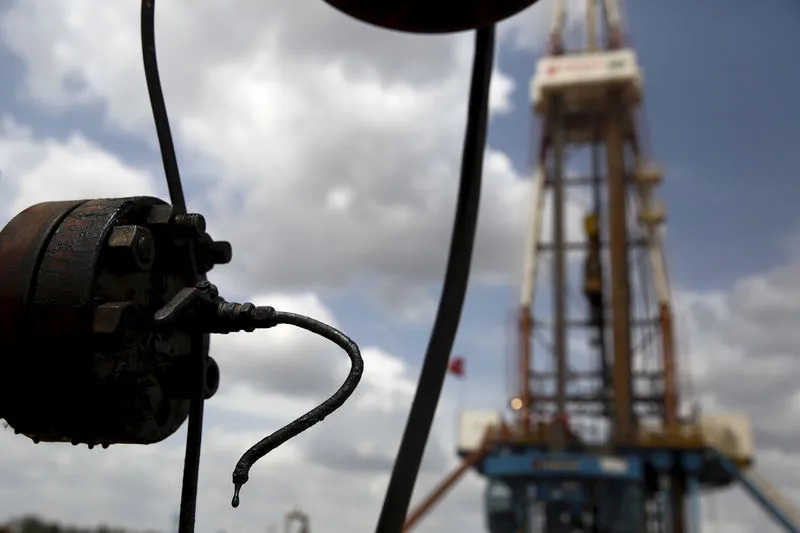 © Reuters. Crude oil drips from a valve at an oil well operated by Venezuela’s state oil company PDVSA, in the oil rich Orinoco belt, near Morichal at the state of Monagas
© Reuters. Crude oil drips from a valve at an oil well operated by Venezuela’s state oil company PDVSA, in the oil rich Orinoco belt, near Morichal at the state of MonagasBy Luc Cohen
CARACAS (Reuters) – A Venezuelan oil joint venture with a state-owned Chinese company accounting for around 10 percent of the crisis-stricken OPEC member country’s output has nearly doubled production in the past seven months, a unit of state-owned PDVSA said on Thursday.
Rising production of heavy crude at Sinovensa, owned by PDVSA subsidiary Venezuelan Petroleum Corporation (CVP) and China National Petroleum Corporation (CNPC), could slow a freefall in Venezuela’s output which has seen production drop to the lowest levels in nearly 70 years.
Sinovensa, which is located in the Orinoco oil belt in southern Venezuela and is the second-largest part foreign-owned oil operation, now produces some 130,000 barrels per day (bpd), CVP said in a Facebook (NASDAQ:) post. An Aug. 10 post said output was 101,181 at the end of July and just 69,400 bpd in April.
Venezuela sold CNPC an additional 9.9 percent stake in Sinovensa in September, leaving it with 49 percent ownership. PDVSA owns the rest. As of 2017, no oilfield joint venture in Venezuela had more than 40 percent foreign ownership.
China has lent over $50 billion to Venezuela through oil-for-loan agreements over the past decade, securing energy supplies for its fast-growing economy. But the financing dried up as the South American country’s economy began spiraling downward in 2015, pressured by plummeting oil prices.
Output hit historic lows earlier this year, when a shakeup in PDVSA’s leadership and a sweeping corruption probe sped up a longstanding decline in Venezuela’s oil output driven by years of underinvestment and crumbling infrastructure.
An exodus of qualified personnel and rising crime at industry installations further weakened output.
“They are managing to recover so-called ‘deferred output’ which they had lost due to issues like equipment theft,” said Antero Alvarado, Venezuela director at consultancy Gas Energy Latin America. “But this will have a short-term impact because output will fall again and they will need to drill more wells.”
Venezuela told the Organization of the Petroleum Exporting Countries it produced 1.46 million bpd in November, up from 1.43 million in October but down from more than 2 million in 2017. Data from secondary sources showed a decline to 1.1 million bpd in November, according to the OPEC report, published Wednesday.
Sinovensa produced an average of 128,700 bpd in 2017, second only to the 146,000 produced by Petropiar, 30 percent owned by Chevron (N:), according to the U.S. Energy Information Administration. The CVP Facebook post cited CNPC executive Jia Yong saying he expected output to reach 165,000 bpd.
Fusion Media or anyone involved with Fusion Media will not accept any liability for loss or damage as a result of reliance on the information including data, quotes, charts and buy/sell signals contained within this website. Please be fully informed regarding the risks and costs associated with trading the financial markets, it is one of the riskiest investment forms possible.
Source: Investing.com




























